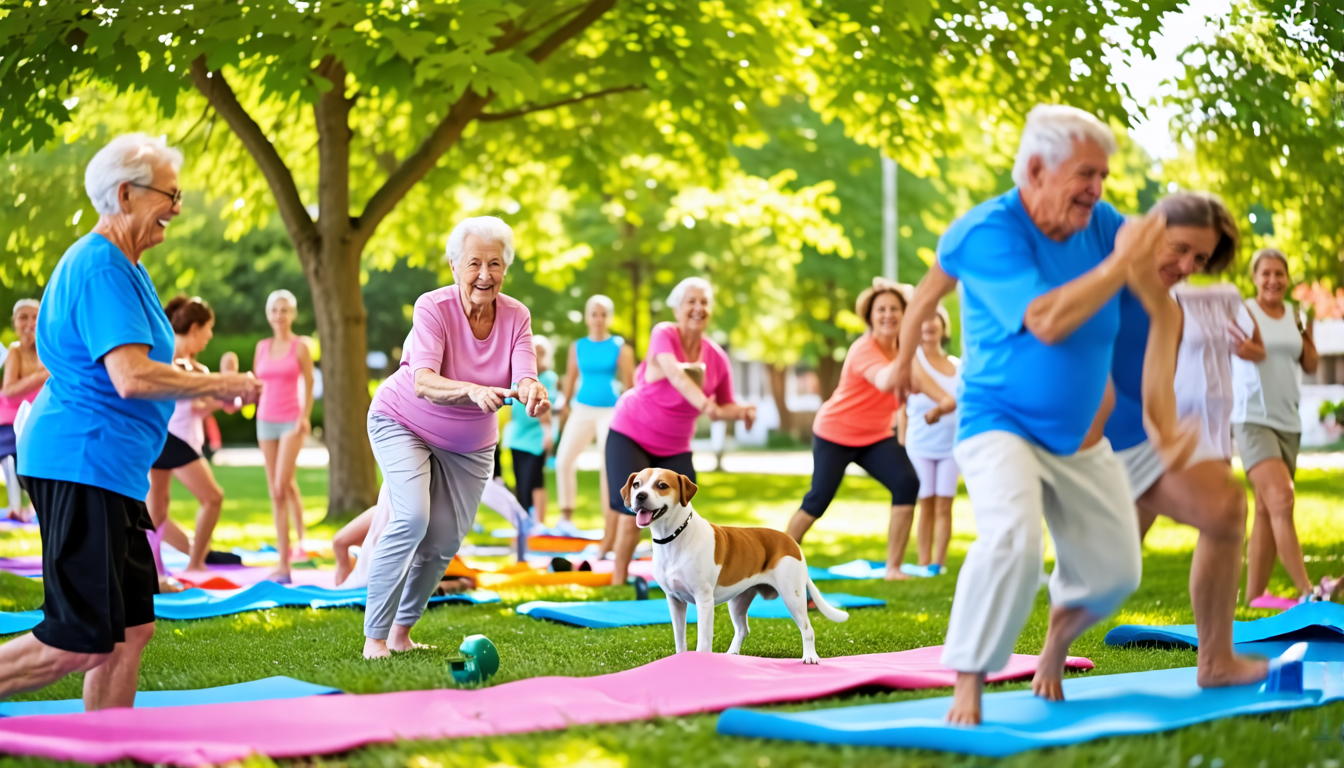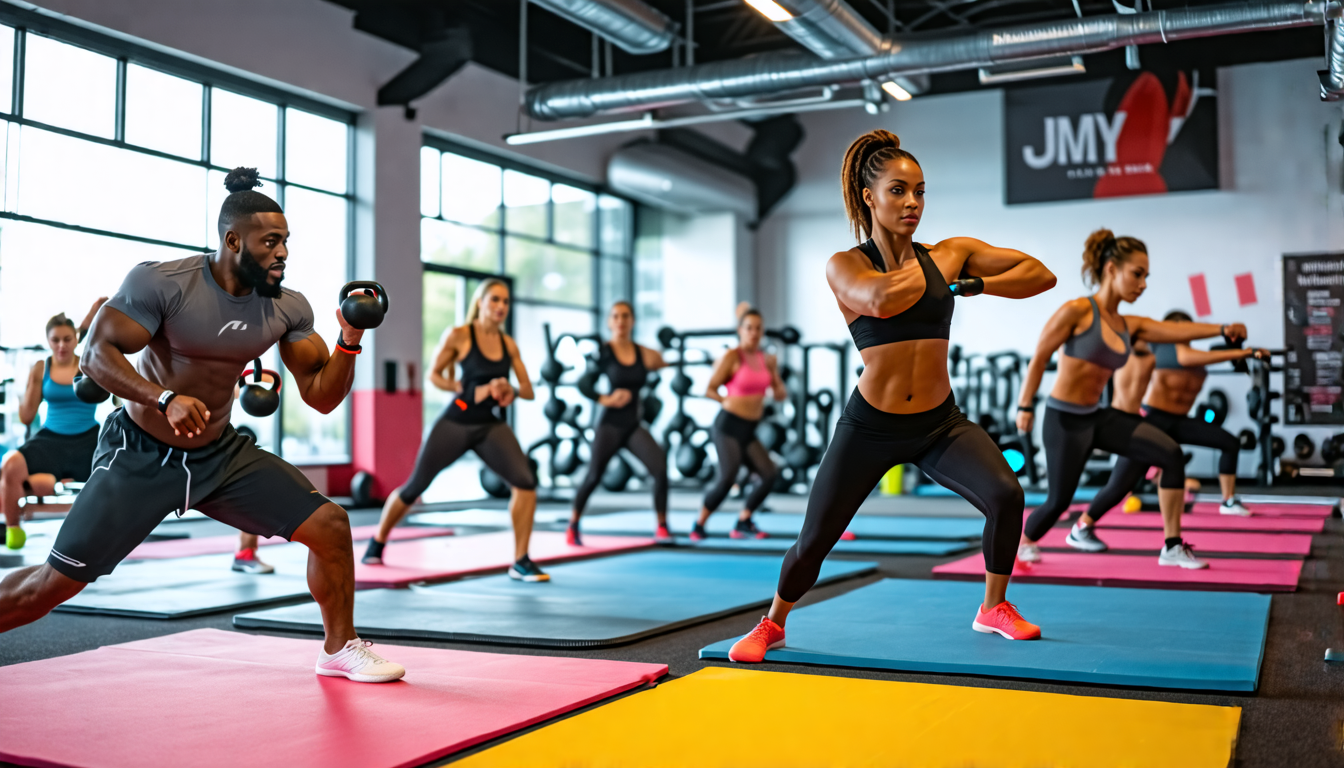
The Unbreakable Bond: How Family Support Fuels Senior Fitness and Transforms Wellbeing
Imagine a future where your loved one doesn’t just age, but thrives. Picture them bending down to tend a garden with ease, laughing as they keep up with their grandchildren, or confidently navigating a new city on a family trip. This vision of vitality stands in stark contrast to the slow, isolating decline that can creep in when an older adult faces the challenges of aging alone. The bridge between these two futures isn’t found in a miracle pill or a secret regimen. It is built on a foundation of human connection. For seniors, consistent, joyful movement is the single greatest predictor of sustained independence and profound joy. And the master key to unlocking that consistency is unwavering, strategic Family Support in Senior Fitness. This guide will transform your family from well-meaning observers into a cohesive team—the ultimate coaches, cheerleaders, and partners in forging a legacy of health.
Foundational Choices: Building the Support Structure
Effective support is not a vague wish; it is a structure you build with intention. It begins long before the first walk is taken or the first stretch is held, rooted in communication, environment, and clearly defined roles.
The Communication & Assessment Framework
Initiate the conversation with empathy, not agenda. Frame it around shared values: “We want you to be able to enjoy your hobbies for years to come,” or “Let’s make sure you feel strong and steady at home.” Collaborate on goals that resonate—safety, reducing pain, maintaining the ability to travel or play with grandkids—rather than arbitrary metrics like weight loss. Enlist a professional, such as a physical therapist or a physician, to conduct a baseline assessment. Attend this appointment together. This isn’t about finding deficits; it’s about creating a safe, informed, and collaborative starting point that the entire family understands.
The Environmental Setup
Transform the home from a potential obstacle course into a sanctuary for movement. Conduct a safety audit: secure rugs, improve lighting, install grab bars in key areas. Then, go further. Create an inviting, dedicated space for activity—a corner with a stable chair, a cleared area for a yoga mat, and a small shelf for equipment. Invest in simple, foundational tools: a quality pair of walking shoes, light resistance bands, and perhaps a stability ball. This physical space sends a powerful, unspoken message: “Your health is a priority here.”
The Support Role Matrix
| Component Category | Primary Options | Key Characteristics |
|---|---|---|
| The Motivator | Spouse/Partner, Adult Child, Grandchild | Provides daily, positive encouragement; joins for walks or gentle workouts; celebrates every small victory; focuses on how activities improve mood and energy, not just appearance. |
| The Logistics Coordinator | Adult Child, Sibling, Nearby Relative | Handles the practical details: schedules doctor or trainer appointments, researches suitable senior fitness classes, arranges transportation, and ensures equipment is maintained and accessible. |
| The Health Advocate | Family member with medical aptitude or designated point person | Attends key medical visits to take notes; clarifies exercise do’s and don’ts with professionals; learns to monitor for signs of pain or overexertion; acts as the communication bridge between the senior and healthcare providers. |
The Core System: Managing Motivation and Safety
Once the foundation is set, Family Support in Senior Fitness becomes a dynamic system to be actively managed. Its two most critical variables are the motivation engine and the safety protocol.
The Motivation Engine
Ideal Target: Consistent, joyful engagement that feels like living, not like a chore.
Consequences of Neglect: Rapid abandonment of routine, resurgence of sedentary habits, and feelings of isolation.
Control Methods: Schedule joint activities as non-negotiable “bonding time.” Leverage technology—use shared step-counting apps or schedule video calls for remote stretching sessions. Most powerfully, tether fitness to a deeply cherished goal: “Let’s build your stamina so you can dance at the wedding,” or “These balance exercises will help us feel confident on that beach vacation.”
The Safety Protocol
Ideal Target: Confident, injury-free participation that builds self-efficacy.
Consequences of Neglect: Fear of movement, risk of actual injury, and major setbacks that undermine confidence.
Control Methods: Educate the family on signs of overexertion (extreme shortness of breath, dizziness, pain that persists). Establish a simple “check-in” routine after activity—ask about how joints feel, not just how many repetitions were done. Integrate hydration and post-activity nutrition into the family plan, making recovery a shared responsibility.
Advanced Practices: Cultivating Shared Fitness and Autonomy
Mastery moves beyond basic support to foster a true culture of shared health, where the senior gradually transitions from participant to co-leader.
Activity Integration
Weave fitness seamlessly into family life. Transform visits into “walk-and-talk” sessions. Initiate gentle backyard games like bocce or croquet. Encourage grandchildren to “help” with seated yoga or resistance band exercises. This reframes activity from a medicalized task to a natural expression of family connection.
Evolving the Family Role
The ultimate goal is autonomy supported by connection. Strategically shift from being a “director” (“We’re walking now”) to a “facilitator” (“Would you like to walk before lunch or after?”). Encourage and help research connections to peer groups—water aerobics classes, senior hiking clubs, or dance groups. Your role becomes curating opportunities while the family foundation remains the emotional home base.
Celebrating the Right Milestones
Reinforce progress by celebrating functional victories, not just scale numbers. Make a ceremony out of climbing the stairs without knee pain, carrying the groceries in from the car, or demonstrating improved balance by standing on one foot while cooking. These are the milestones that truly signify reclaimed independence.
Navigating Setbacks and Resistance
A proactive family anticipates challenges, viewing them not as failures but as puzzles to solve together.
Prevention Through Partnership
Proactively discuss potential barriers. Co-create a “Plan B” for bad weather (a living room workout video), for low energy (a 10-minute chair yoga session instead of a walk), or for boredom. The most powerful tool is non-judgmental listening. Often, resistance is a mask for fear, pain, or discouragement; uncovering the real root requires patience and empathy.
Intervention and Strategic Pivot
When a hurdle appears, diagnose before you prescribe.
Is it boredom, pain, fear, or low mood?
Follow a tiered response:
- First Response – Adapt: Change the activity. Try a new park, a different time of day, or a fun new fitness app together.
- Second Response – Recalibrate: Scale back intensity and reaffirm core goals. Take a planned rest day, then revisit the original “why” over a cup of tea.
- Third Response – Enlist Expertise: Seek external, objective input. Jointly consult a physical therapist, a senior fitness specialist, or a counselor. This demonstrates that seeking help is a sign of strength, not weakness.
A Family Fitness Roadmap
| Phase | Primary Tasks | Family Focus |
|---|---|---|
| Initial Launch (First 90 Days) |
Conduct the goal-setting conversation; complete the home safety audit; commit to 1-2 short, joint activities per week. | Building trust and establishing routine. Prioritize consistency and positive experience over intensity or duration. |
| Established Rhythm (3-12 Months) |
Introduce one new activity each season; schedule a progress review with a professional; research and encourage enrollment in a social fitness class. | Introducing variety and gentle progression. Shifting focus to helping the senior internalize the habit and find their own rhythm. |
| Long-Term Maintenance (1 Year+) |
The family participates in “their” senior’s signature activity (e.g., an annual charity walk); update goals for new life phases; celebrate annual “fitness anniversaries.” | Cultivating a legacy of health. The senior often becomes the motivator, inspiring other family members. The bond itself is the sustaining reward. |
The journey of senior fitness is a family affair, a shared investment whose dividends are paid in quality years, cherished memories, and profound dignity. It begins with a single, empathetic conversation and evolves into a self-sustaining cycle of health, supported by the unbreakable bond of Family Support in Senior Fitness. This is how the vision of vitality is made real—not as a solo achievement, but as a collective triumph. You are not just helping a loved one exercise; you are building a legacy of strength, independence, and joy that will enrich every member of your family, for generations to come.





